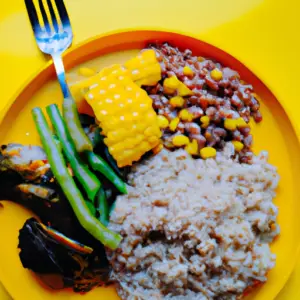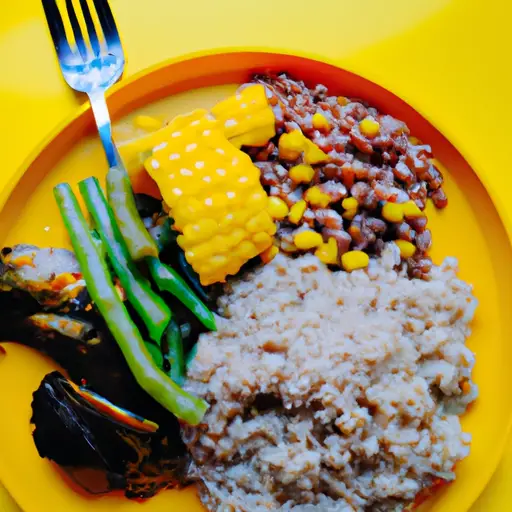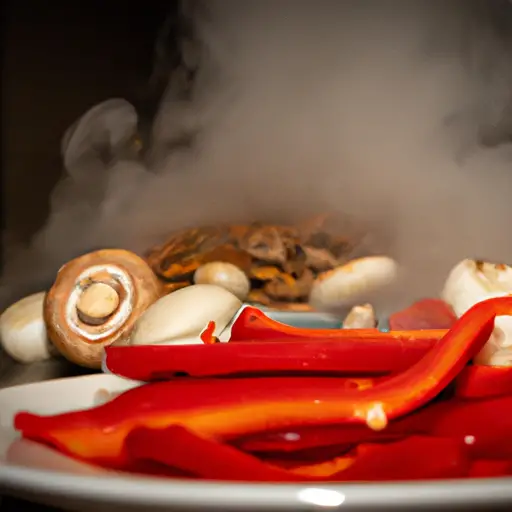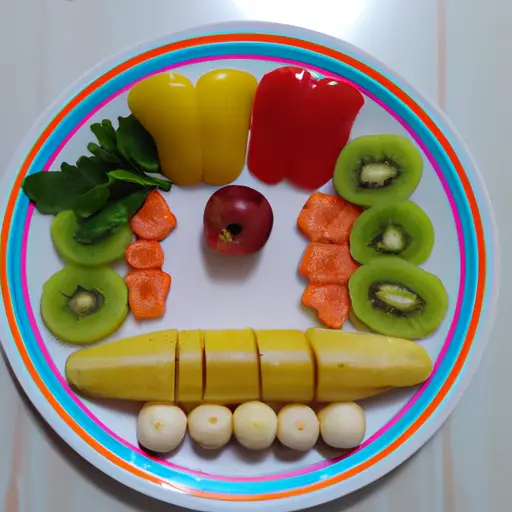Using Calorie Counting and Portion Control for Weight Loss
Hey there! Let’s talk about Calorie Counting and Portion Control
Are you tired of trying fad diets that don’t seem to work? Well, you’re not alone. I used to feel the same way until I discover the importance of calorie counting and portion control for weight loss. These methods have been tried and tested, and I’m sure they will work for you too.
So, what is calorie counting? It simply means keeping track of the number of calories you consume daily. On the other hand, portion control involves eating the right amount of food necessary for your body’s needs. Sounds simple, right? However, it isn’t easy as it sounds.
There are numerous benefits to using calorie counting and portion control for weight loss. For starters, these methods are sustainable, and you can gradually progress towards your desired weight goal. Unlike fad diets, you won’t feel like you’re depriving yourself of food, and you’ll learn to make healthy choices.
In this article, we’ll dive into the details of calorie counting and portion control. We’ll also provide tips on how to ensure these methods are effective and sustainable. Before we begin, check out this article on the importance of portion control.
Wrap Your Head Around Calories and Portions
Okay, let’s dive in and talk about what a calorie actually is. To put it simply, a calorie is a unit of measurement used to calculate the energy content in food and drinks. Every time you eat or drink something, your body breaks it down and uses it for fuel. Calories are your body’s source of energy and each type of food has a different calorie count.

Now let’s talk about portions. Portions refer to the amount of food you eat during a meal or snack. The size of your portions can greatly impact your calorie intake and weight loss goals. Each type of food has a recommended serving size, which can be found on food labels or through online resources.
It’s important to understand the relationship between calories and portions because they go hand in hand. Eating too many calories can lead to weight gain, while portion control can help you manage your calorie intake and promote weight loss.
Get ready to crunch some numbers – it’s time to learn how to calculate your calorie intake!
Ready to Crunch Some Numbers?
Okay, so first things first: what’s a calorie, really? Calories describe the amount of energy that food and drinks provide to our bodies – it’s what allows us to move, think, and function on a daily basis. When we consume more calories than we burn, we gain weight. So, to lose weight, we need to make sure we’re consuming fewer calories than we’re using throughout the day.
So, how do we figure out our calorie intake? There are a few methods, but one popular approach is to estimate how many calories we need daily based on our age, sex, weight, and activity level. Online calculators can help with this, but there are also formulas that you can use if you want to get really detailed. Some apps, like MyFitnessPal, will also provide you with a recommended calorie intake after you enter your information.
Once you have a target calorie range, the next step is to start tracking your food intake. This can be done with a good old-fashioned journal or by using a calorie tracking app. I personally like to use an app because it’s easy to access on my phone and I can quickly search for foods and check their calorie count. Remember that even small bites and sips can add up throughout the day – it’s important to record everything you consume!
It’s worth noting that the accuracy of calorie counting can vary – some people may burn calories differently due to their unique metabolism or genetics, and different food items can vary in their calorie count depending on how they’re prepared. However, once you have a calorie target range, tracking your food intake can still be a helpful tool for keeping yourself accountable and mindful of what you’re consuming daily.
Controlling Portion Sizes: Don’t Be Fooled by Your Eyes
When it comes to weight loss, portion control is just as important as counting calories. Many of us tend to underestimate the amount of food we consume, and as a result, we eat more than we need to and gain weight. The key to controlling your portions is to train your eyes and mind to recognize what a serving size looks like.
Using measuring cups and spoons to accurately track portions is a great place to start. If a recipe calls for a half-cup of rice, use a measuring cup to portion out exactly that amount instead of just eyeballing it. You can also use a food scale to weigh out portions of protein and produce.
Another helpful tip is to make adjustments to your servings if necessary. For example, if you’re about to eat a large serving of pasta but realize that it’s more than what you should eat, you can immediately put the excess into a container for later or share it with someone else at the table.
If you’re eating out, don’t be afraid to ask for a half-portion or box up leftovers for another meal. It’s also important to pay attention to portion sizes when snacking. Rather than mindlessly munching on an entire bag of chips, portion out a serving into a separate container and put the rest away.
Remember, controlling your portions doesn’t have to mean depriving yourself of your favorite foods. It’s all about finding a balance and being mindful of what you eat. With practice, you’ll be able to easily recognize appropriate serving sizes and make conscious choices that help you reach your weight loss goals.
Tips ‘n Tricks to Keep You Truckin’
Listen up, folks! It’s your girl here, and I’ve got some tips that’ll get you one step closer to your weight loss goals! Now, I know it’s tough to stick to a regimen, but with a few tricks up your sleeve, you’ll be well on your way to crushing it!
First things first: set realistic goals! Rome wasn’t built in a day, and neither is the perfect body! Don’t beat yourself up if you don’t hit every single marker you set for yourself. Small progress is still progress, honey.
Next, find ways to stay motivated! Trust me, this is the key to long-term success. Whether it’s getting a workout buddy, listening to music that pumps you up, or treating yourself to a little reward after achieving a milestone, you need to keep your eye on the prize!
And lastly, don’t be afraid to reach out for support! Losing weight is hard, but it’s even harder when you’re going it alone. Talk to friends, family, or healthcare professionals about your goals and seek advice, encouragement, and accountability.
So, there you have it! My top tips to help you stay the course and achieve your weight loss dreams. Remember, it’s a journey, not a race, so enjoy the ride!
Finally, choosing calorie counting and portion control for sustainable weight loss
Well, there you have it folks! That’s what you need to know to get started with calorie counting and portion control. Trust me when I say that I know it can seem daunting at first, but it’s all about finding what works best for you. After all, slow and steady wins the race!
It’s important to remember that making small changes over time is what leads to long-term success. So don’t get discouraged if you have setbacks, keep pushing towards your goals. Remember to set realistic objectives, and don’t forget that weight loss is not just about changing your physical appearance, but also improving your overall health and wellbeing.
If you ever feel stuck or demotivated, that’s okay—it happens to all of us! Reach out to your loved ones, healthcare professionals or even online communities to find encouragement and support. Remember that what works for one person might not work for someone else, so keep experimenting until you find what fits you best.
To sum it up, by choosing calorie counting and portion control, you’re taking control of your health journey, fostering a healthier relationship with food, and reaping the benefits of all your hard work! So, let’s get started on making those small, sustainable changes to our lifestyles, and don’t forget to celebrate every little victory along the way!






